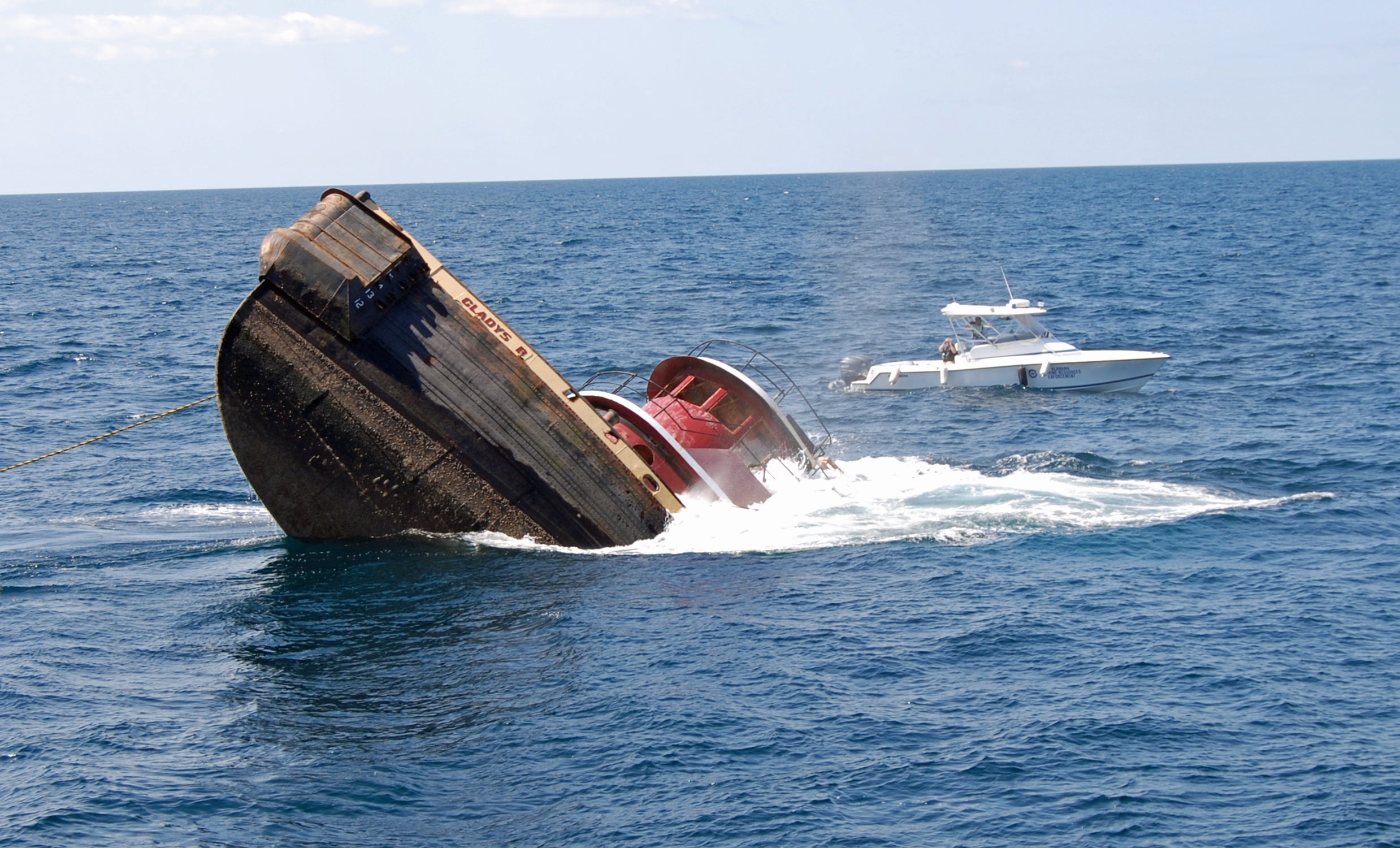By DAVID RAINER, Alabama Department of Conservation and Natural Resources
Alabama already has the reputation as one of the best places in the nation to fish for saltwater species, especially red snapper.
Now, Alabama is striving to become one of the top destinations for divers to explore numerous wrecks, scuttled vessels and our state’s unparalleled artificial reef zones.
The latest efforts to increase the awareness for dive enthusiasts occurred last week when the Alabama Marine Resources Division (MRD) scuttled a 102-foot tugboat, the Gladys B, in the Tatum-Winn North reef zone approximately 22 nautical miles south of Fort Morgan in 100 feet of water. The superstructure of the vessel is about 62 feet below the surface. The Gladys B was built in 1937 and donated to the MRD Artificial Reef Program by Steiner’s Shipyard from Bayou la Batre. The reef site coordinates are 29 53.635'N and 87 56.071'W.
On the same trip, MRD deployed approximately 200 concrete culvert pipes to enhance the old Tulsa wreck and the Radmore Pipe Number 1 site about 15 miles south of Dauphin Island and to create a new reef site about 25 miles south of Fort Morgan.
The next steps in the plans to provide habitat close to shore that may also attract dive enthusiasts from all over the U.S. will occur offshore and within yards of the Alabama shoreline.
The nearshore project includes circalittoral reefs, sometimes also called snorkeling reefs, that can be reached from the sandy beaches.
Craig Newton, MRD’s Artificial Reefs Program Coordinator, said bids were opened for the circalittoral reefs at three Gulf State Park beach access sites.
At those three sites, 166 reef modules will be deployed to provide habitat for a wide variety of marine life.
“We’re going to create four clusters of reef modules within the three circalittoral reef zones,” Newton said. “We anticipate we will have more activity at the Pavilion reef site, so we’re going to create two independent clusters of reefs at the Pavilion site. We will have one cluster of reefs at the Perdido site and one cluster of reefs at the Romar site.”
Walter Marine of Orange Beach won the contract to deploy the modules in the new zones, and that should happen sometime this year, Newton said.
“We were able to secure some more funds for this project and make it significantly larger than what the original grant proposal covered,” Newton said. “We are excited about that.”
Newton said the reefs, which will be about 475 feet from the shoreline, will be marked by large pilings on the beach. There will be no markers in the water. Signage on the beach will describe the project and include information on what marine life snorkelers might encounter on the reefs.
The offshore project will be the deployment of the New Venture, a 250-foot surveying vessel, which will be ready for final inspection by May 2018. Newton said the original plans included towing the vessel to Mobile to wait on a weather window to deploy the ship. Those plans have changed. Now the vessel will be towed to Venice, La. When the weather allows, the New Venture will be towed straight to the deployment site about 20 nautical miles south of Orange Beach in about 120 feet of water. The top of the superstructure will be 55 to 60 feet below the surface.
“We look to be about a month away from completing the deployment,” Newton said. “We had some engineering models on how the ship was going to sink. We had to add a couple of bulkheads within the interior of the ship to direct water to keep the ship stable as it’s going down. We want to do all we can to make sure the ship lands upright. We don’t want it to roll over.”








